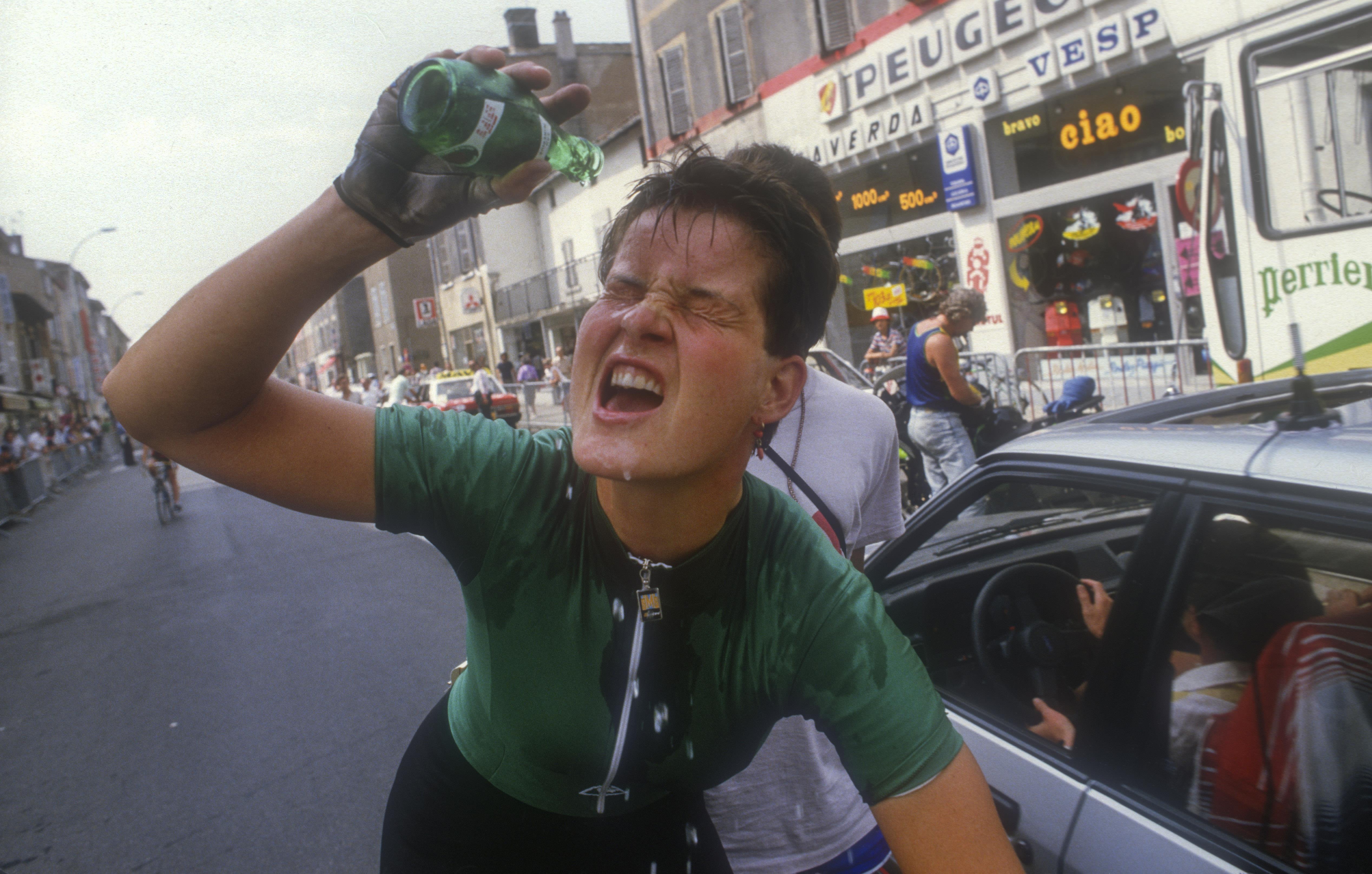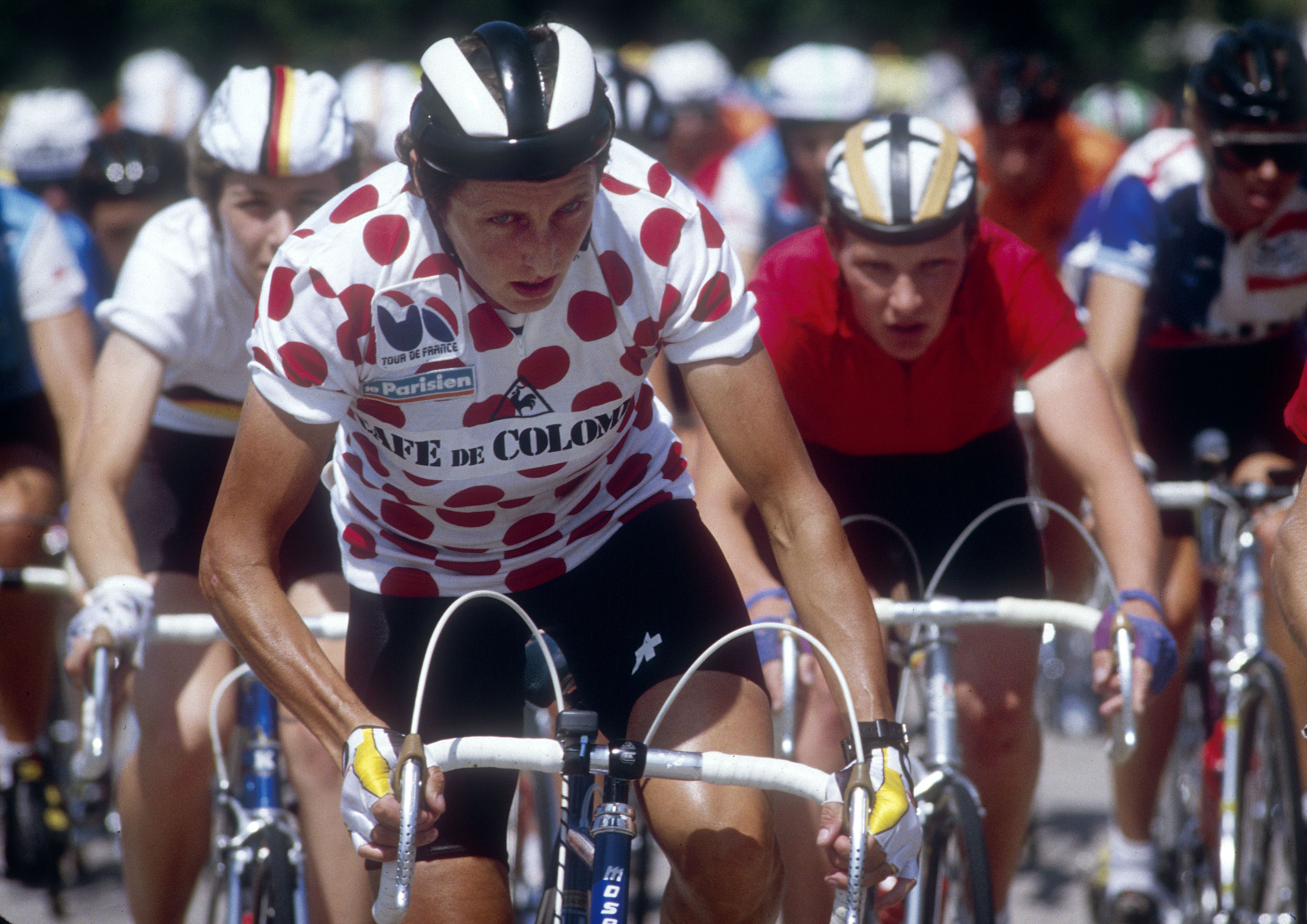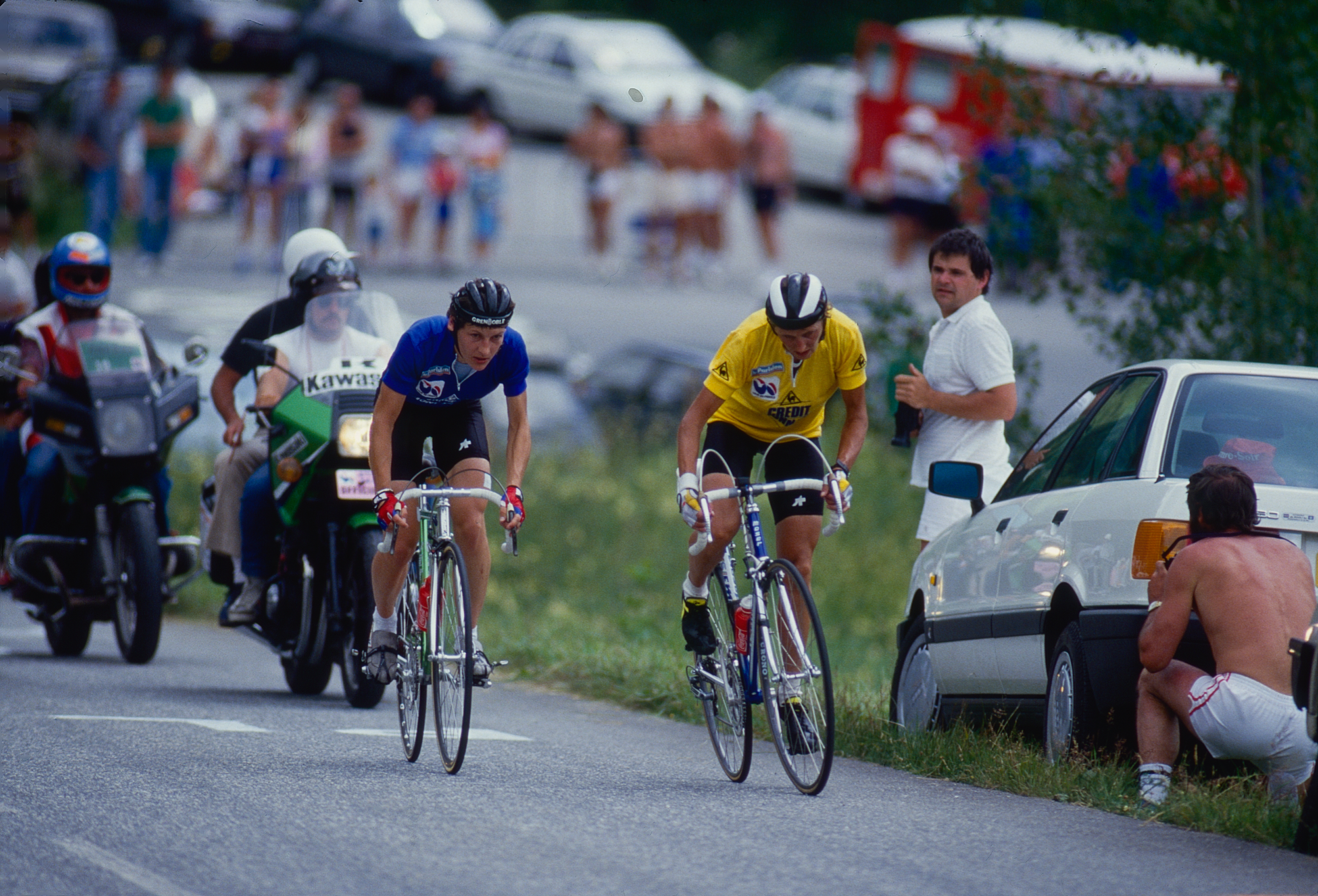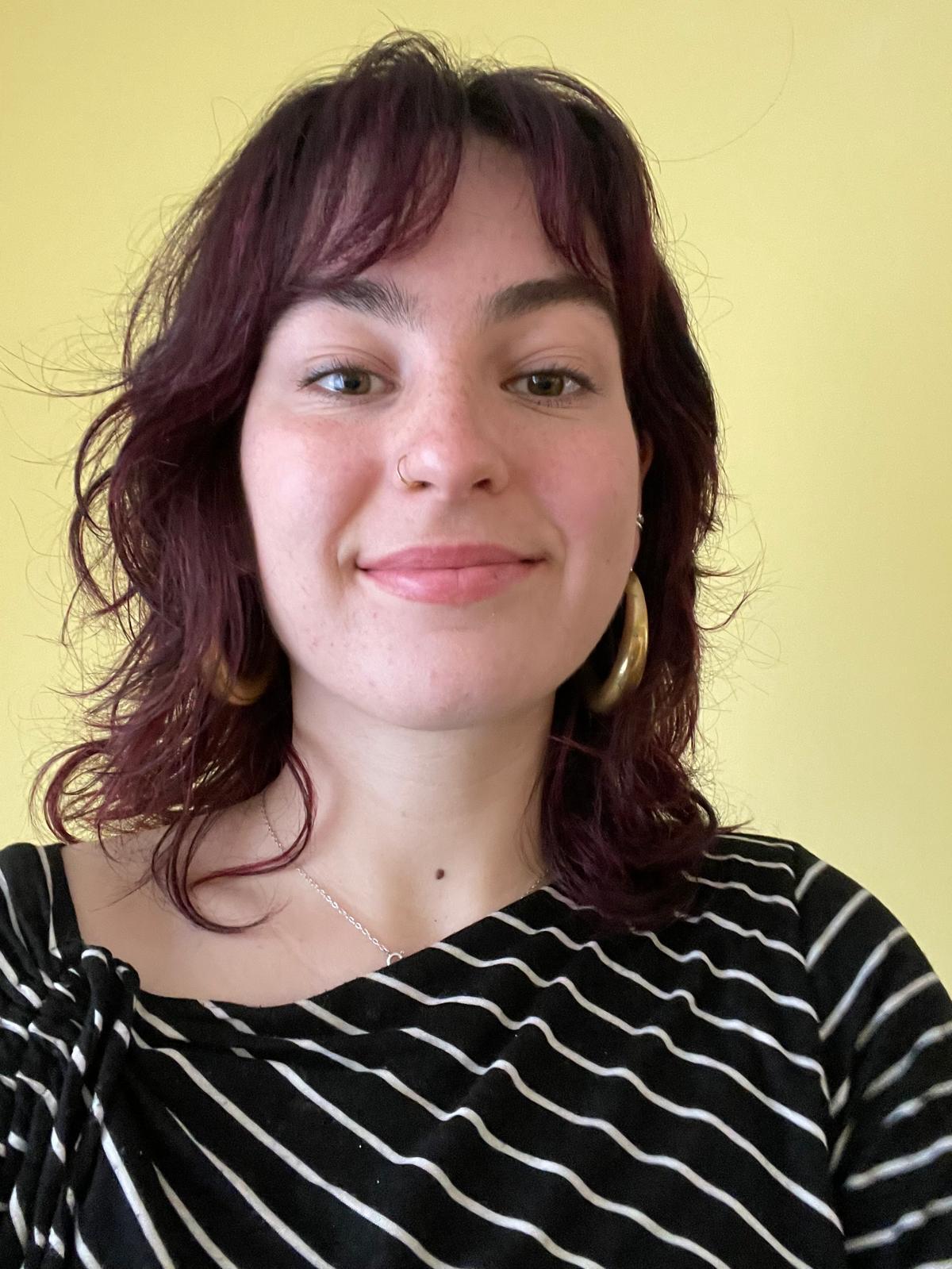'It was new, it was exciting, it was an adventure. And it was about f****** time' - the story of the forgotten women's Tour de France
New film 'Breakaway Femmes' charts the tumultuous history of the Tour de France Féminin


“What do you mean you raced the Tour de France?”
Almost every woman who raced the Tour between 1984 and 1989 has long been familiar with this question, it seems.
“If you then speak to somebody and say, oh by the way, we rode it in the eighties. What do you mean you rode it in the eighties? Yeah, there was a women’s Tour de France. Well, I didn't know that.” Mandy Jones has been part of this exchange enough times to rattle it off on command for the Breakaway Femmes cameras, director Eleanor Sharpe behind the lens.
“It was just such a huge part of their lives, and they just really weren’t able to talk about it,” Sharpe says.
“It was almost like they’d been in a war together. I don't know why they couldn't talk about it, but they didn't. They all felt that way. They just didn't feel like they had the permission to tell their story.”
Breakaway Femmes: the Forgotten Tour de France opens at the Champs-Élysées, a peloton of women captured in the technicolour wobble of 80s television. The riders are pedalling through Paris at the start of the 1984 Tour de France Féminin, the first of its kind since Britain’s Millie Robinson took victory in 1955 (this, the original French women’s Tour lasted only a summer).
For six years, the Tour de France Féminin followed the route of the men’s, riding two hours ahead. They raced on the same mountains and cobblestones as the hommes, and attracted the same throng of spectators, but were forced to operate without the same sponsorships, or salaries to cycle - many weren’t even given a second jersey to compete in. All on top of a perpetual resentment that underscored - and ultimately ended - the women’s race. Now, Breakaway Femmes is retelling the story of the women who pioneered the sport, who battled to get to the start line, and raced as hard as their male counterparts when they got there, only to then be erased from the sport they fought so passionately to be part of.
The latest race content, interviews, features, reviews and expert buying guides, direct to your inbox!
“I’ve watched the Tour de France for years…but it really surprised me that I hadn’t heard of [the women’s Tour], and when I talked to other people about it, no one else had heard about it either,” the film’s director, Eleanor Sharpe admitted.
The news had eventually come from Trish Liggett, the wife of commentator Phil Liggett, about whom Sharpe was making a documentary.
“We were interviewing Trish, and during her interview she just casually mentioned that she’d been the general manager of the Great Britain women’s Tour de France team in the 80s.”
Trish, it transpired, held the keys not only to this kernel of a story, but to much of the film’s eventual content, too. She had recorded hours of Tour de France coverage on VHS tapes tucked under her bed, including 30 second packages updating viewers on the progress of the women’s race.
“They were buried amongst the men’s footage, so all the shots were really fast, and that impacted the way we edited the films. We didn’t have any really love shots where we could just kind of sit and linger, so everything became quite montage style.”

And that wasn’t the only hurdle Sharpe faced when building the story of the Breakaway Femmes.
“It was actually quite difficult to track down the women,” she told me.
The riders were not only dotted around the world, but many had taken new surnames, and - not typically as chronically online as younger generations - operated with a near-untraceable digital footprint.
“But generally once I found one woman in a country, she tended to know the other women.”
Finding the winner of the first ever Tour de France Feminin, America’s Marianne Martin, meant discovering Patty Peoples, Inga Thompson and Betsy King. The formidable Dutch team were soon found, too, along with Sue Gornall and Clare Greenwood from Trish Liggett’s British team, Greenwood equipped with a flash of orange-peach in her grey hair.
“Finding the Chinese women was really difficult, too."
In 1985, Chinese riders were welcomed to the French race. However, soon into the race, it became clear that the athletes - skilled in track and field, not cycling - were struggling. Battling language and culture barriers whilst competing in a sport nearly completely new to them, two of the team dropped out with altitude sickness, leaving Li Wang and her remaining teammates to complete the remaining stages. Wang finished 8th overall.
"We had the race booklets that some of the riders had hung onto, and it had the names of the Chinese riders in them, but we had no idea whether they were spelled correctly, because even with the European riders, the race booklets tended to misspell and mangle all their names. Anyway, we found this Chinese company that facilitates film shoots for international crews in China, and they were able to track down these women, which was amazing.”
“I really thought it was important to include the Chinese riders. I mean, partly because it's just such an interesting story with them coming over from a communist country, but also I was quite aware that I was telling the story of feminism, but it was a particular version of feminism. It was a white, fairly affluent, middle class feminism. So I was kind of quite consciously aware of that. I knew that if we could find these women, their story would be quite different, them coming from quite different backgrounds and different motivations.”
The other voice core to the story of women’s cycling in the late twentieth century was three time Tour de France Féminin champion, the infamously tough-tempered Jeannie Longo, of France.
“The women [interviewed] are lovely, but that only gets you so far,” Sharpe says.
“You really do need a couple of characters for the rough edges, definitely. And Jeannie Longo was this ball of rough edges. But she’s also an incredibly important rider. And it would have been a completely different film if we hadn't been able to get her in the film.”

Forget Jonas Vingegaard and Tadej Pogačar, Jeannie Longo’s rivalry with Italy's ”Flying Mum”, Maria Canins, brought an explosive energy to the women’s peloton. Canins won in 1985 and 86, with Longo podiuming in second both years. Frustrated with the repeated close-shaves, the Frenchwoman made her discontent loudly known. A commentator recounts Longo punching a Dutch rider post-race ("a wonderful upper cut"); one rider described her as "ruthless and single-minded", with Greenwood rounding off the shared sentiment: “If I never see her again, I’ll be quite happy.”
“I really strongly felt that I wanted to allow the women to be themselves," Sharpe says, on her decision to air many of the riders' uncomfortable relationship with Longo.
"I didn’t want to whitewash them at all, and make them seem like a sisterhood, and often the temptation is there to say, ‘Dear God, you can't show women behaving badly because that reflects badly on all female kind.’
“I just wanted to allow the women to be messy. If they weren't perfect, that's fine. They should be imperfect, because God knows, the men are imperfect.
“It's nice seeing these women in their mid 60s and early 70s still incredibly competitive and passionate. A lot of this stuff happened 40 years ago, and they're still pretty fired up about it, which was exciting to see.”
But, in 1989 the women’s race came to an abrupt end. A brewing storm of dwindling media coverage, logistical issues that had routinely resulted in the support cars catching the tail of the women’s race, and rising costs combined to end the race, the aspirations of the riders - and generations after them - to ride in the Tour snatched away after only five years.
“What struck me when I spoke to all of them was how grateful they all were that I was taking an interest,” Sharpe remembers.
“When I reached out to them, it was the first time, I think, in 30 plus years, that they'd really gotten the chance to talk. And it was like opening a floodplain, all they wanted to do was talk. I felt like I should be the one who was feeling grateful, you know, having the privilege to talk to them.
"When we started making this film, the Tour de France Femmes hadn't come back, so when I initially contacted them, they were still very much in the wilderness and no one was interested, and they didn't know that all the race would ever come back.”
In 2022 the women’s Tour returned. For many entering the sport in the years after, it can seem unfathomable that there was ever a time without it. But the echoes are there: Tour de France Femmes (Ayesha McGowan, the ex-pro who this year rode the Tour de France route before the men, has taken to calling the men’s race the Tour de France Hommes) sponsors tagging their name on the end of the race title in the way the men’s does not. A shorter, week-long race compared to the men’s three, and one tenth of the prize money given to the men.
But what shines through in the joyful, sometimes beguiling, but constantly inspiring ninety minutes spent with the women of the Tour de France, is the passion they all shared for cycling. Remembering them, it is clear, is part of how we move our sport forward.
“I challenge anyone who tries to make me invisible," says Canadian rider and 1984 stage 8 winner, Kelly-Ann Way.
"Because I'm part of a big group of women that changed the face of women’s cycling. And nobody can take that away.” Canadian stage winner, Kelly-Ann Way.
Breakaway Femmes comes to select British cinemas from September, to find out where to watch, click here.

Meg is a news writer for Cycling Weekly. In her time around cycling, Meg is a podcast producer and lover of anything that gets her outside, and moving.
From the Welsh-English borderlands, Meg's first taste of cycling was downhill - she's now learning to love the up, and swapping her full-sus for gravel (for the most part!).
You must confirm your public display name before commenting
Please logout and then login again, you will then be prompted to enter your display name.
